Here is a step-by-step guide to reducing your digital footprint online, whether you want to lock down data or vanish entirely.
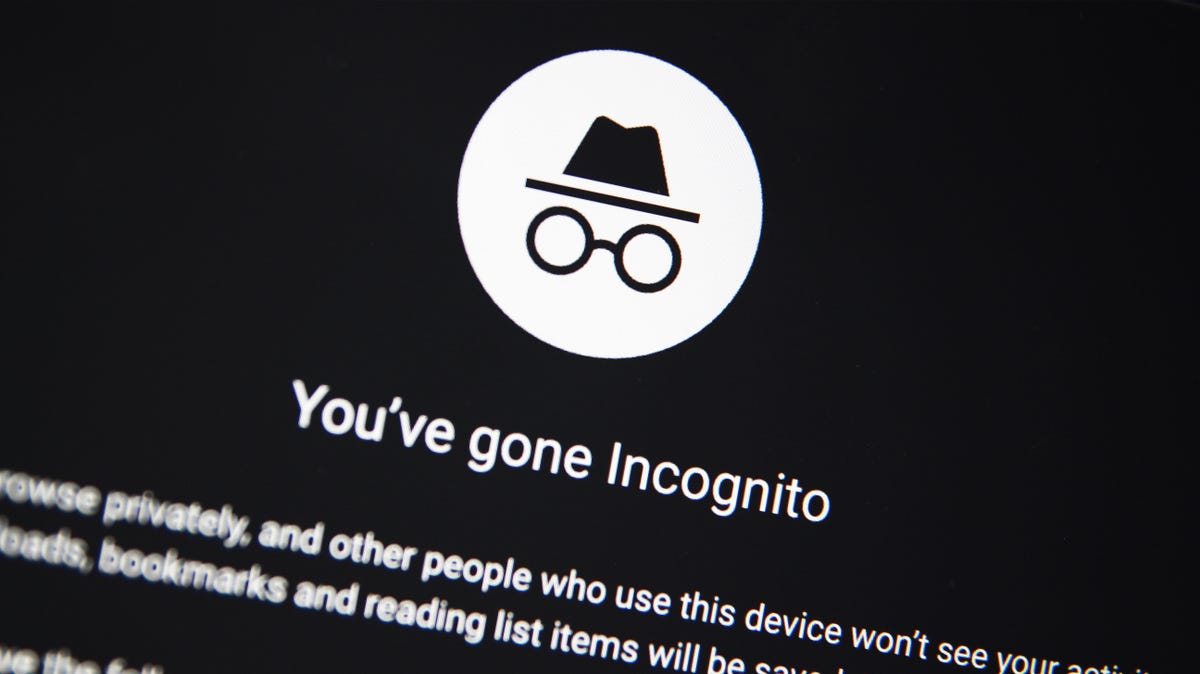
Google Chrome’s Incognito Mode.
Image: Maria Diaz/ZDNet
There is now a very thin line between our physical and digital identities.
When you apply for a new job, many employers will evaluate your social media presence to ascertain if you are a suitable candidate. Advertisers will scrape publicly available information on you, your public profiles, and your search history for targeted marketing.
A misjudged tweet from years ago or an inappropriate Facebook photo can destroy future job prospects or ruin a career. A Google search that reveals an old conviction can make it more difficult to get hired, and allegations of criminal conduct spread online can cause misery and impact your mental wellbeing.
There’s the idea that once something is online, it is immortal, immutable, and almost impossible to contain. You should not put anything online you wouldn’t want your grandmother to see, although sometimes you aren’t in control of what gets published.
Abuse, stalking, and bullying may also factor as reasons to erase our digital footprints and seize control of our devices. If you want to take control of your privacy and online data, here are some tips to get you started.
Remove yourself from internet search results and limit access to your accounts
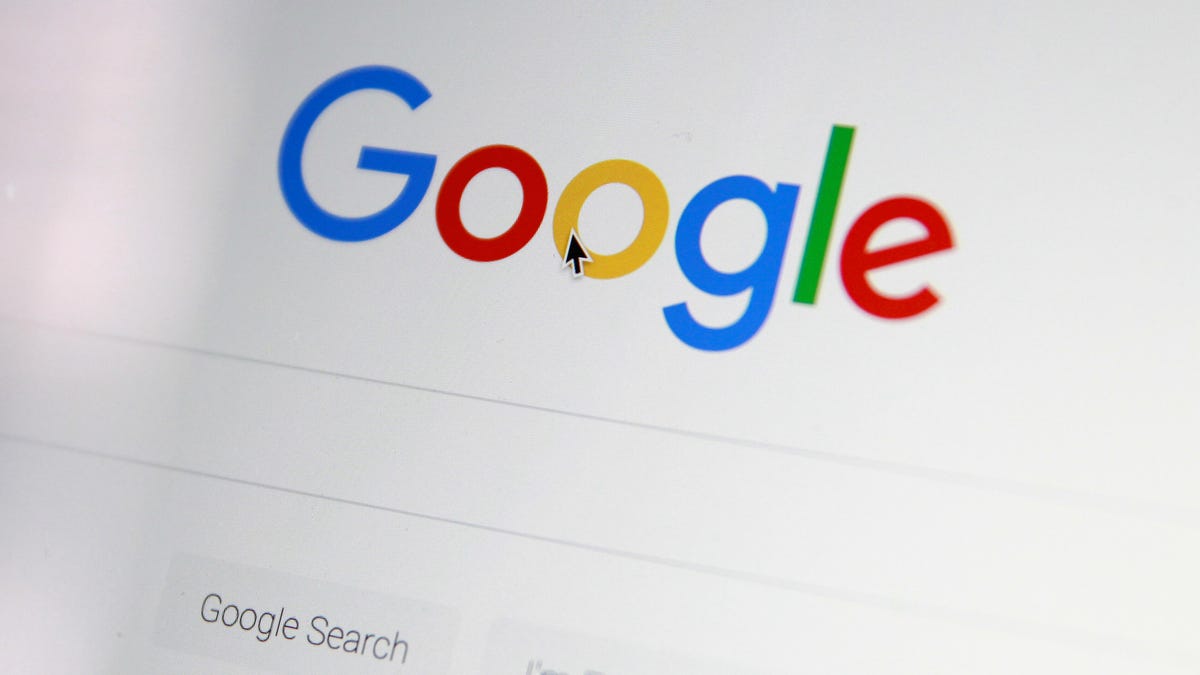
Image: Maria Diaz/ZDNet
Google and other search engines
The Google search engine, among others, is a double-edged sword: It provides links and website addresses to users in response to search queries, but unless the right controls are in place, your search queries can be cataloged for marketing purposes. These engines search can also be used to uncover exactly what information about you is in the public domain.
Once you know what is online, you can start tackling the problem. Run a quick search for your full name and note any website domains that flag you, social media account links, YouTube videos, and anything else of interest.
- Quick tip: To stop your search queries from being tracked, switch to DuckDuckGo.
The right to be forgotten
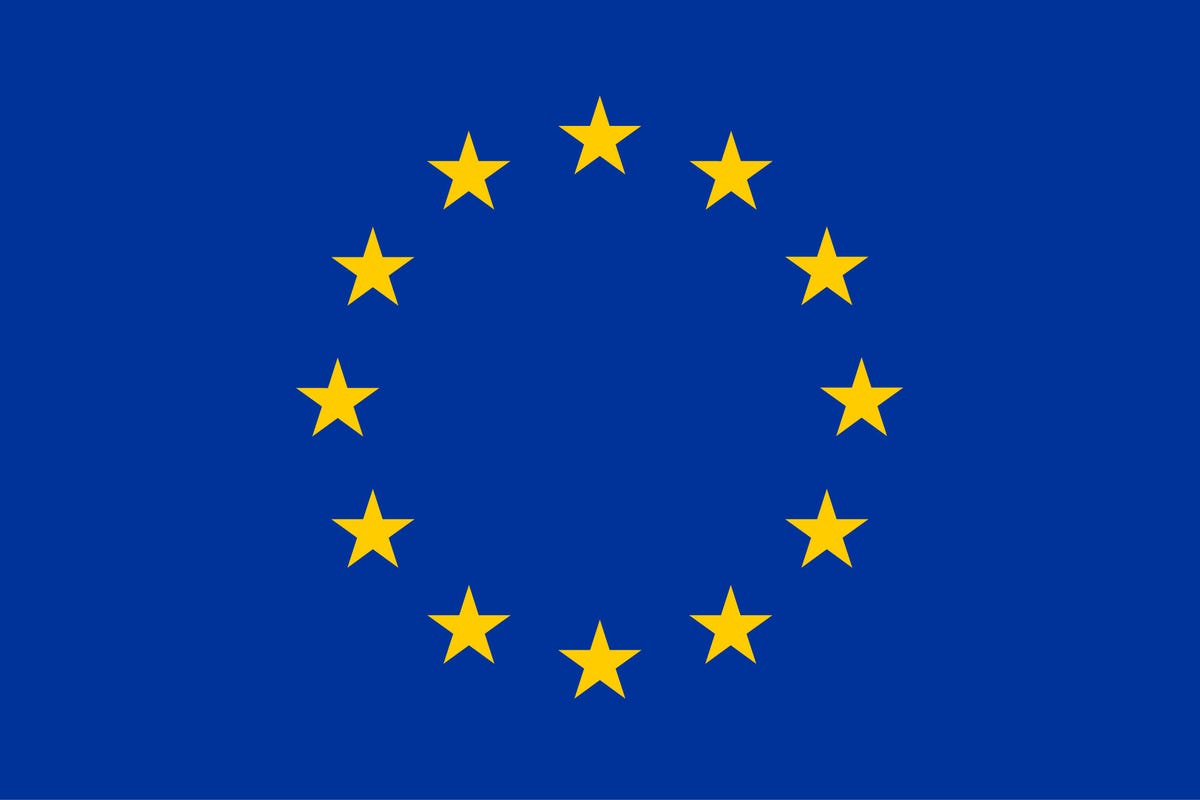
European Union
In the EU, citizens can request the removal of information from Google search results.
After filling in this form, requests are reviewed by Google employees on a case-by-case basis. You must provide the specific URLs you want delisted, and any search queries related to these URLs, and you must explain why the tech giant should agree to your request.
“Broadly, the reviewer will consider whether and how the information may be in the public interest and weigh this against your rights under the applicable data protection law,” Google says. “There are several reasons why information may be in the public interest. As part of the balancing exercise, Google looks to a number of different sources, such as the guidelines developed by European data protection regulators.”
Google may not accept every request to remove links relating to you. Reasons given for refusal include technical reasons, duplicate URLs, information deemed “strongly in the public interest,” and whether or not the content on a web page relates to professional lives, past convictions, work positions, or self-authored content.
At the time of writing, Google has received a total of 1.29 million delisting requests and just over 5 million URL delisting requests.
Have I been pwned?
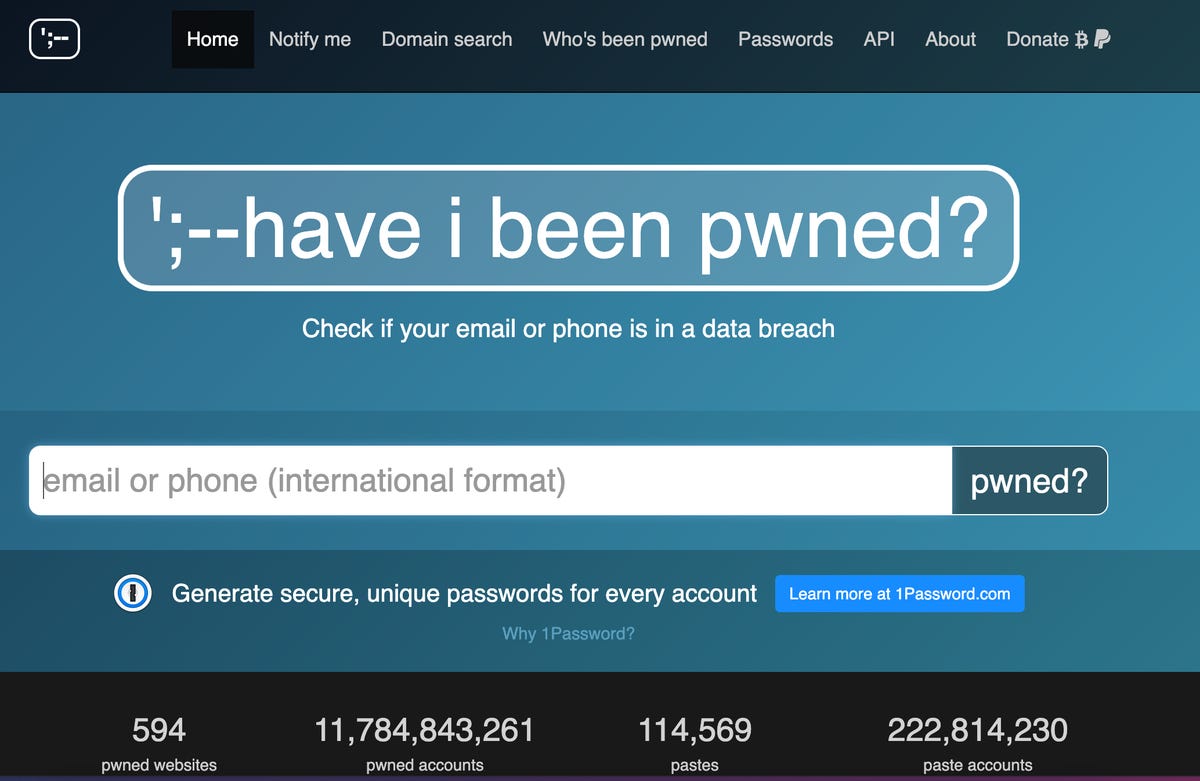
Have I Been Pwned
You can’t control your digital footprint without knowing where and what information concerning you is stored — and what has been leaked online.
The Have I Been Pwned service is run by cybersecurity expert Troy Hunt and can be a useful tool for discovering if any account information belonging to you has been compromised or included in a data breach.
If you find an email address or telephone number of yours has been “pwned,” check to see what data breaches you have become embroiled in, and make sure to change any vulnerable passwords as quickly as possible. You won’t be able to do much about the data leak itself, but this also could serve as a reminder of where you have opened online accounts.
Google accounts
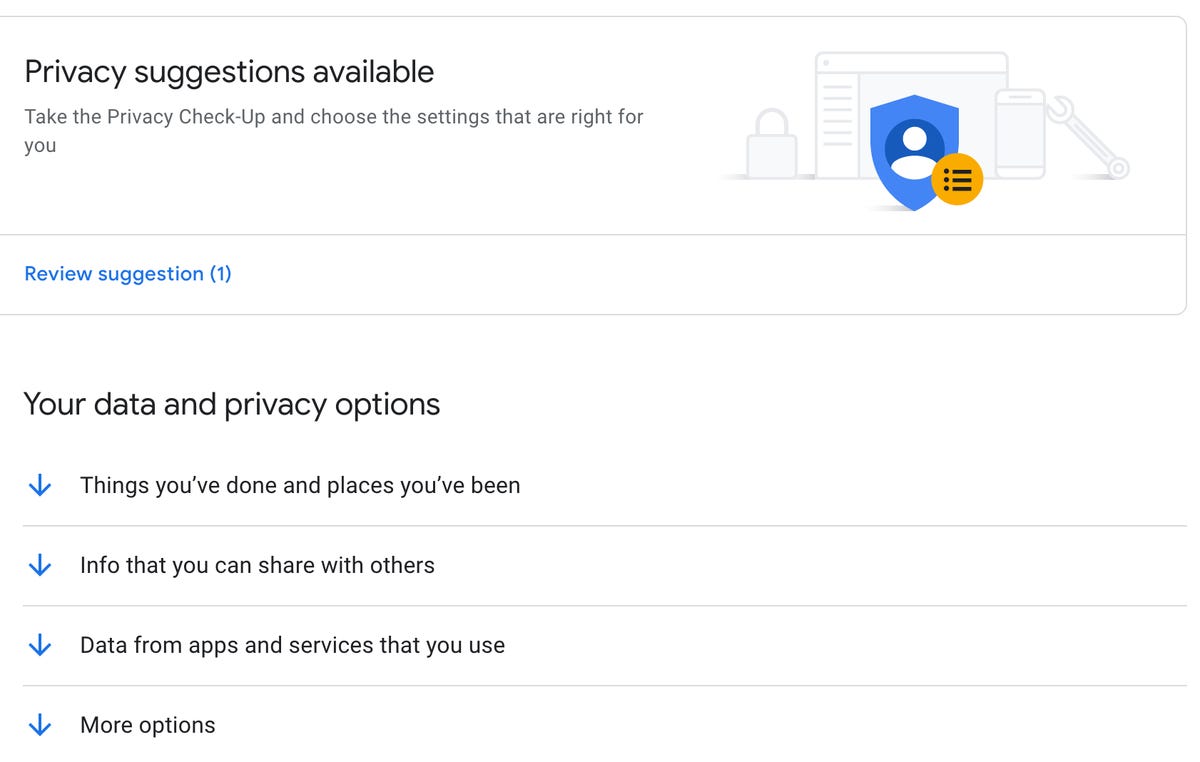
Screenshot via ZDNet
Make sure to visit the Google Account page, where there are numerous settings that can boost your privacy, reduce data collection, or remove you altogether from the ecosystem.
- Privacy checkup: The Google Privacy checkup allows you to tell Google to stop saving search queries and your location history.
You can choose to disallow Google from saving web and app activities, Chrome history, YouTube logs, voice and audio, and other data. Google has also introduced an autodelete function for data stored. In this section, you can also choose whether or not to allow Google to use your information for tailored advertising.
- Security checkup: The Google Security checkup can be used to show you which devices have access to your account, including laptops, PCs, and handsets. You can also find a list of any third-party applications that have been granted permission to access your account. Revoke permissions as necessary.
- Delete me: Found under Account Preferences, Google’s deletion service can be used to delete select products or remove your account entirely. You can also download a copy of all your data.
For a quick fix, use a service
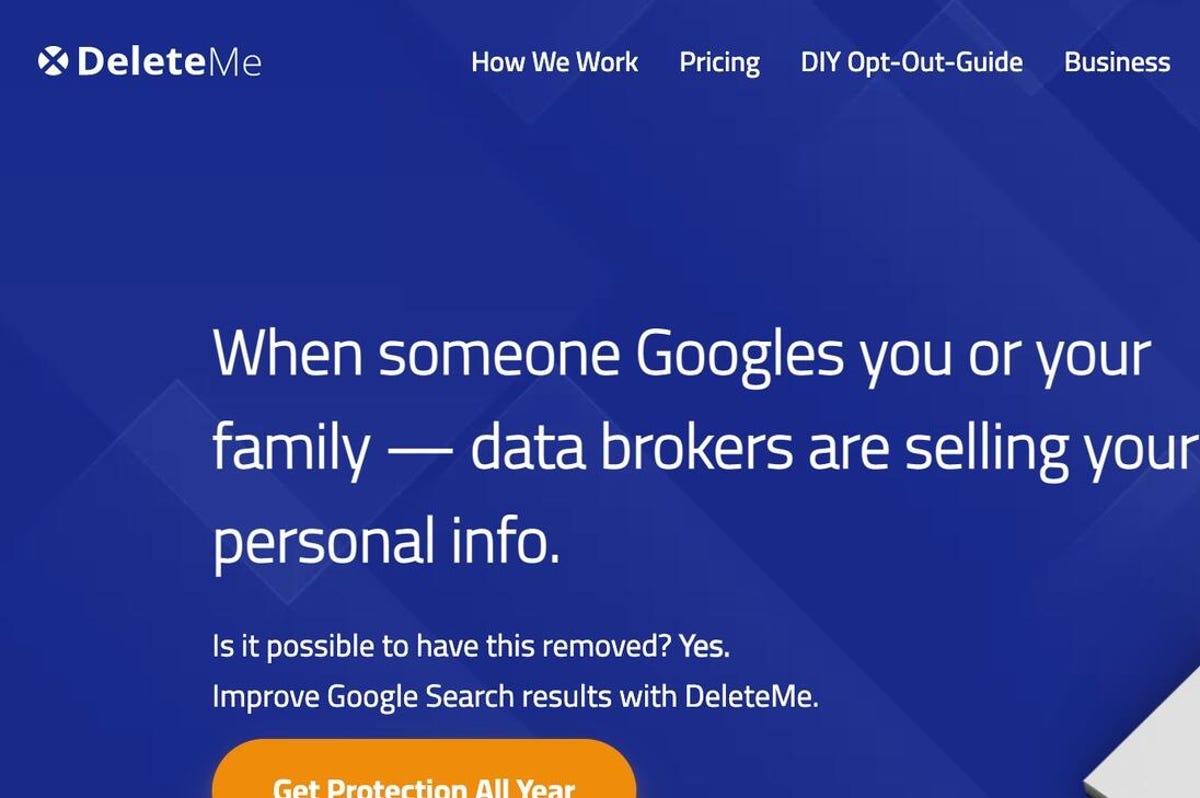
Screenshot via ZDNet
There are several services available out there where you can pay to keep your information away from data brokers.
One example is DeleteMe, a paid subscription service that maintains tabs on data collectors and removes data such as names, current and past addresses, dates of birth, and aliases on your behalf.
This monitoring can keep your private information out of search results and away from platforms such as open people search databases.
When it comes to mailing lists, services such as Unroll.me can list everything you are subscribed to, making the job of unsubscribing from newsletters, company updates, and more far easier. However, this service is not currently available to those in the EU due to GDPR regulations.
Lock down your social media or delete accounts entirely
- Facebook: In the Settings tab, you can download all of Facebook’s information on you.
In the Privacy tab, you should restrict your posts to “friends only” and limit your past posts, and you can decide to disallow lookups by your provided email address or phone number.
You also have the option to remove your Facebook profile from search engine results outside of the social networking platform. Under the Location tab, consider turning off location data collection by Facebook, too.
If you look at Apps and Websites, you can see what is connected to your Facebook account. If you choose to delete these, Facebook can also automatically remove posts, videos, and events the connected service posted on your behalf.
- Twitter: Twitter also allows users to request their archive, which is all the information collected from you. This option can be found under the Settings and privacy tab.
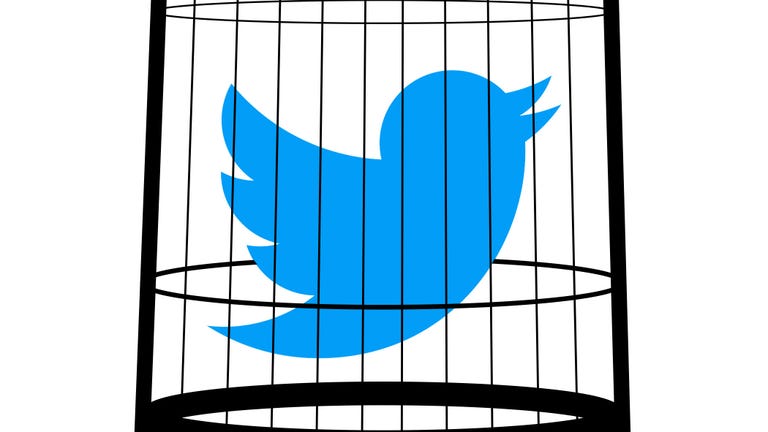
Image: Maria Diaz/ZDNet
In the Settings area, you can choose to lock down your account and make tweets private. You can also turn off tweets containing location data, decide whether or not to allow email and phone number searches to connect others to your profile, and choose whether to allow others to tag you in photos.
Under the Safety portion of the tab, you can prevent your tweets from appearing in the search results of blocked users. You can also deactivate your account entirely.
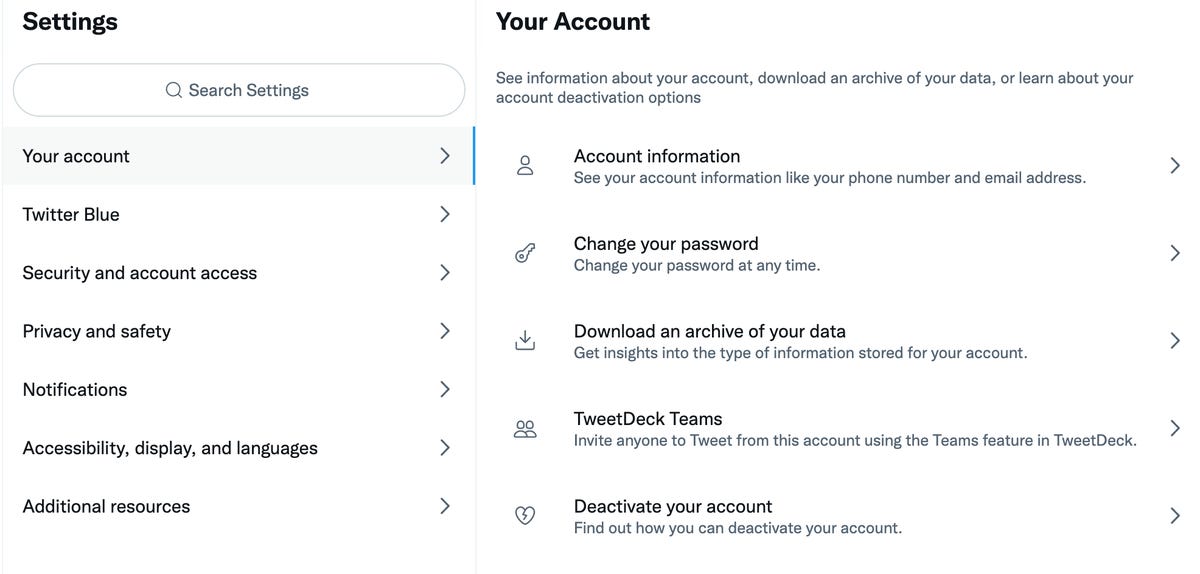
Screenshot via ZDNet
- Instagram: Facebook-owned Instagram has a number of privacy settings you can also change to maintain an acceptable level of privacy.
By default, anyone can view your photos and videos on your Instagram account unless you are a minor, in which case your account should be private by default. However, by going to your profile, clicking Settings, Account Privacy, and switching “Private account” on, you can make sure your content is only viewed by approved users.
Remove everything: A more extreme option is to delete all of your primary social media accounts completely.
On Facebook, you can go to Settings & Privacy, then Settings, select Your Facebook Information, and click on Deactivation & Deletion to deactivate it. This gives you the option to return at a later time and does not delete your data. Your settings, photos, and other content are saved, but your Facebook presence will not appear beyond unclickable text.
You can also permanently delete your account. If you have trouble finding this setting, you can type “delete Facebook” in the Help Center tab.
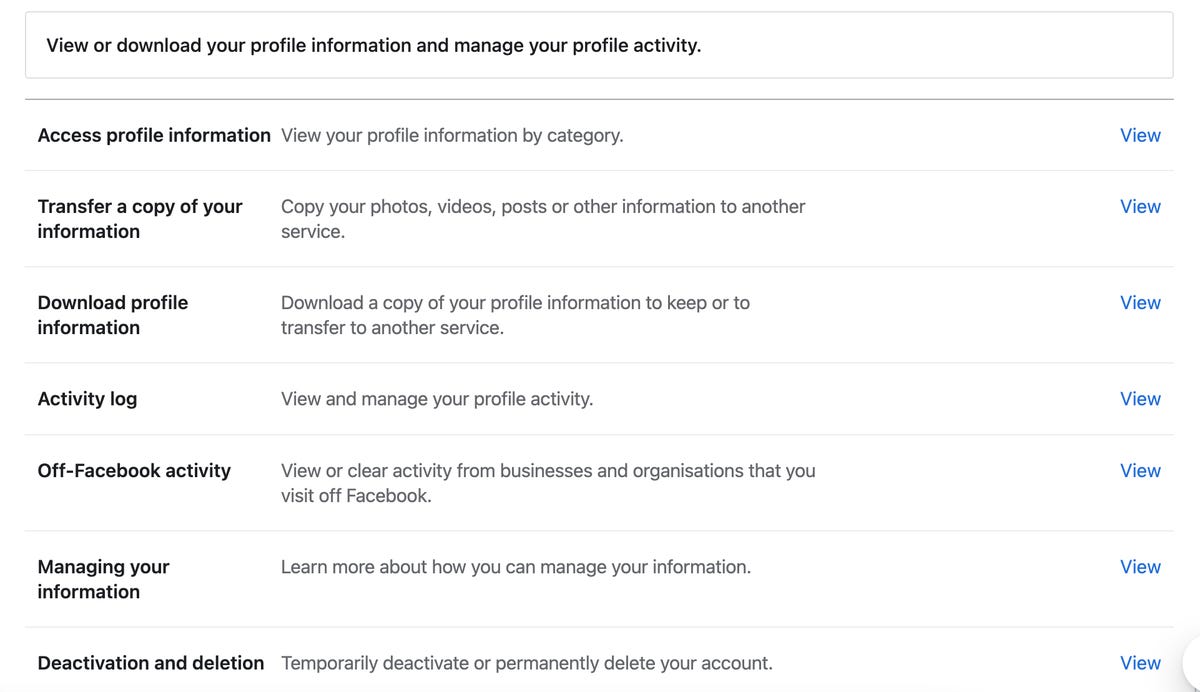
Screenshot via ZDNet
You are given a grace period to change your mind and log back in. It can take up to 90 days before the deletion of content on your Facebook wall and in your account will begin.
In order to deactivate Twitter, you need to click on Settings and privacy from the drop-down menu under your profile icon. From the Account tab, you can then click deactivate.
To delete your Instagram account, log in and go to the request deletion page. Once you have submitted an answer as to why you are deleting your account, you will be prompted to re-enter your password, and then a delete account option will appear.
Remove old accounts and blog posts
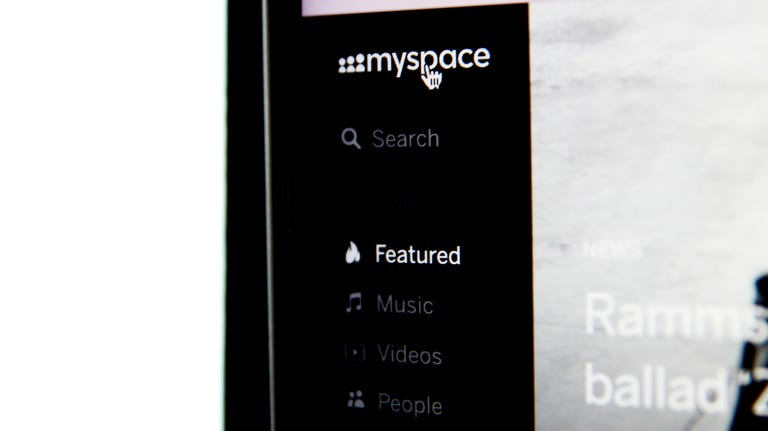
Yes, MySpace is still a thing.
Image: Maria Diaz/ZDNet
Is it really necessary to preserve what you had for breakfast one morning in 2017 or your review of a now-defunct retail shop near you? No.
Time and effort are required to comb through old posts, but the result is worth it, and this may also train you to be more selective about the information you share in the future. Unless the account is one you use frequently, consider deleting it permanently. It is a pain to find, remember credentials, and recover passwords associated with old accounts, but this is an important step in locking down your data.
To find your old accounts, visit Have I Been Pwned, check the lists of connected apps in your Facebook and Google accounts, and, if you have a password manager, check it for the credentials of accounts you have used since signing up.
You may have to manually log in to each account you want to remove and, depending on the service, delete your info from there or contact the service provider with the request.
Justdeleteme.com is a helpful directory containing guides to removing accounts from countless online services and a rating on how hard each type of account is to remove, ranging from “easy” to “impossible.” Another alternative is Account Killer.
Hide yourself
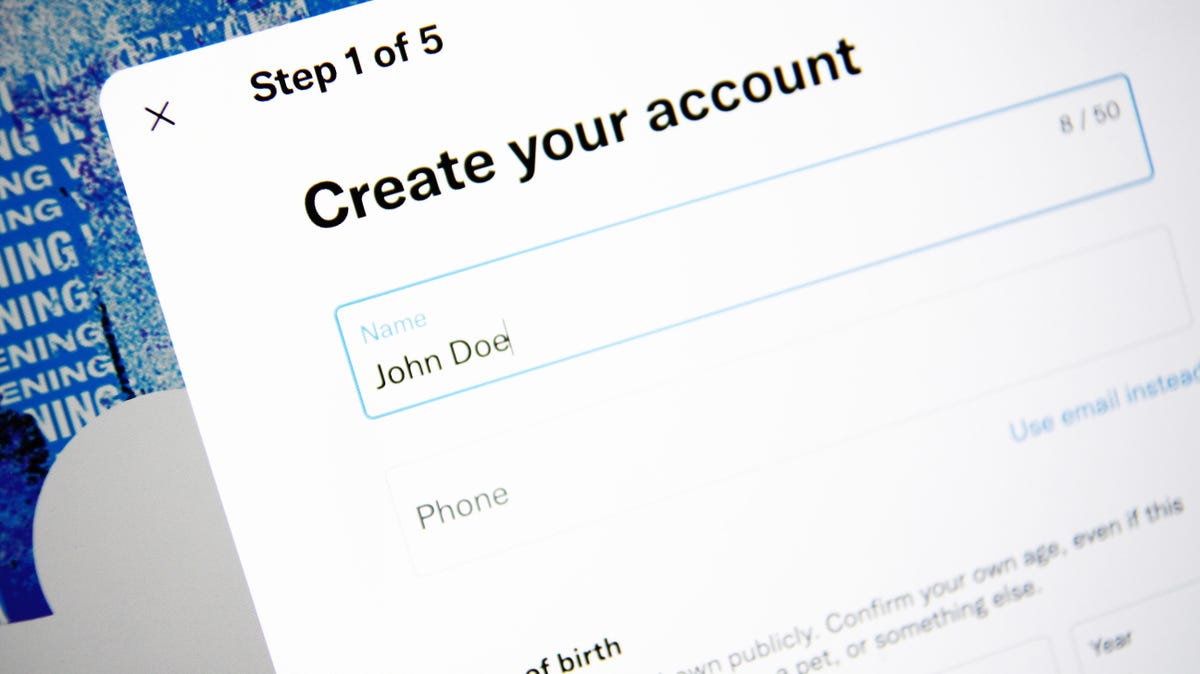
Using an alias can be a good way to hide your identity.
Image: Maria Diaz/ZDNet
If you cannot delete online accounts outright and can only deactivate them, before you do, delete as much content from them as possible. If the account is no longer relevant to you, consider changing the name and personal details connected to it, as well as removing or changing photos to generic alternatives.
When it comes to active accounts such as on Facebook or Twitter, anonymity or aliases can help keep your digital and physical presences separate.
It is against most terms of service to not use your full, correct name, but it is still common practice for many to change their surname at the least to prevent work and personal accounts — and lives — from colliding. You can also delete personal photos and change them to something that doesn’t identify you.
Can VPNs help protect my privacy?
A virtual private network (VPN) can mask your IP address and create a private tunnel between yourself and online services. Data and communication packets sent between a browser and server are encrypted, which can prevent eavesdroppers from harvesting your information or tracking your online activity.
There are services out there that are both subscription-based and free. It is generally better to sign up for a paid VPN service if you can — no VPN service is truly “free” given the cost of creating and maintaining the infrastructure required to route traffic. Therefore, your data may be used or sold to third parties in return for VPN services.
If you want to anonymize your footprint, consider using the Tor onion router network.
If you use the Tor network to browse the Internet, anyone attempting to monitor you would be met with a series of nodes used to divert your encrypted traffic, making it very difficult to trace you back to an original IP address.
Tor blocks trackers and scripts that might follow you around, whether it is advertisers, your ISP, or individuals spying on you. The network is popular with activists, journalists, lawyers, and civil rights groups.
How do I limit what marketers send and see?
Another way to keep your digital footprint clean of debris is to separate online services between email accounts. If you need to provide an email address for a one-off purchase, for example, consider using a junk email address — which will quickly become full to the brim with promotional material but will keep your primary email address from being added to more marketing databases.
For example, you could set up two Gmail accounts, one as a primary and one as a delegate for spam and potential junk.
What can I do if I want to delete embarrassing or explicit content online?
You may have come across embarrassing forum posts or messages that you do not have the privileges required to delete, or discover that sensitive personal images or videos of you have been shared without your permission.
The first step you should take is to contact organizations and webmasters directly.
When you contact them, include a link to the content you are concerned about, give your reasons, and hope they agree to delete it. However, do not expect an immediate response.
An exception to this is explicit content and what is known as revenge porn: If intimate images have been shared out of spite, you will likely have more success in getting them rapidly removed, especially from social networks.
It’s important to try and get the images or videos taken down as quickly as possible, not only to cut viewership, but for your own mental health. If you are able, reach out to friends and families and ask them to also report offending posts or email webmasters on your behalf.
If your images and videos have been uploaded to pornography services anonymously, however, you’ll be in for more of a battle — and it may be time to get law enforcement agencies involved.
You need to research your local laws and find out if the person posting your content could be prosecuted. For example, revenge porn in the United Kingdom is illegal. If you are a minor, please talk to a trusted parent or guardian and let them help you.
What can I do if things have gone too far online?
Starting from scratch may seem extreme, but it could be worth considering in some cases. The outright deletion of email accounts, social media, and e-commerce services won’t immediately destroy all of your data or search results connected to them, but it will, over time, make them less likely to appear.
Just make sure that before you take this irrevocable step, you have backed up any data that you want to keep, such as irreplaceable photos you have uploaded to social media or document scans stashed away in your email inbox.








